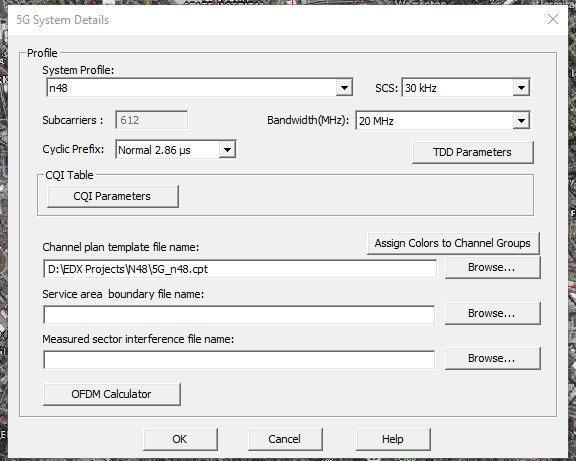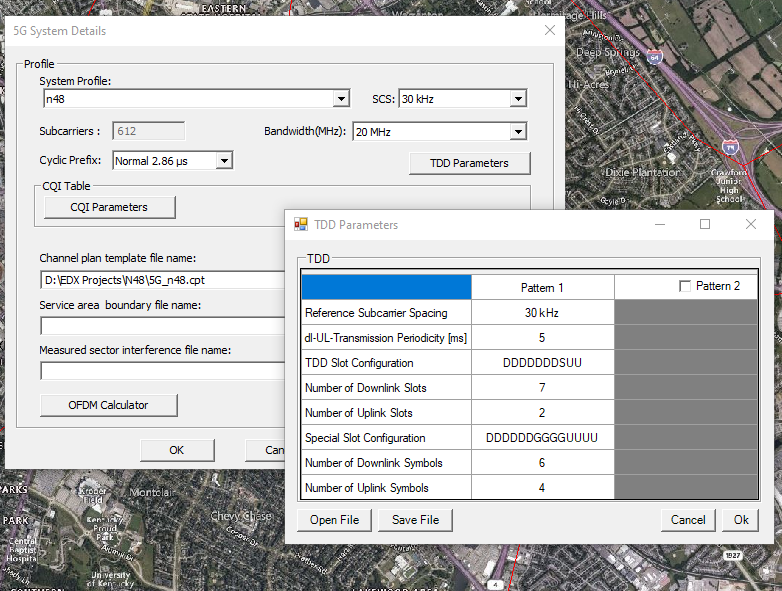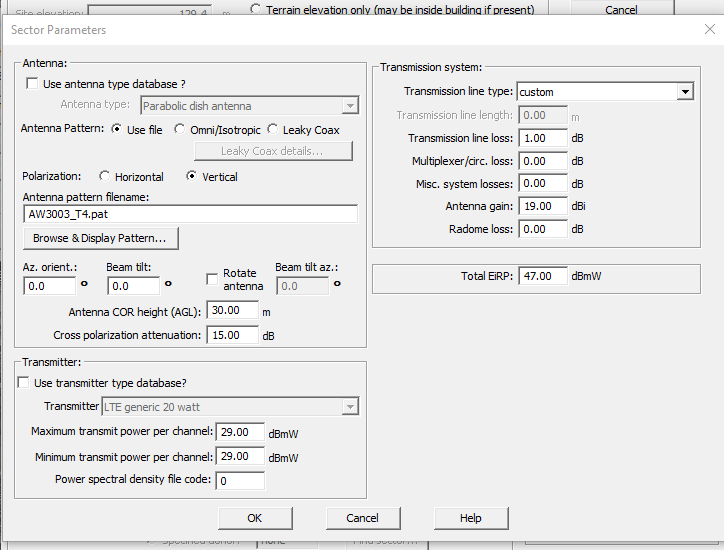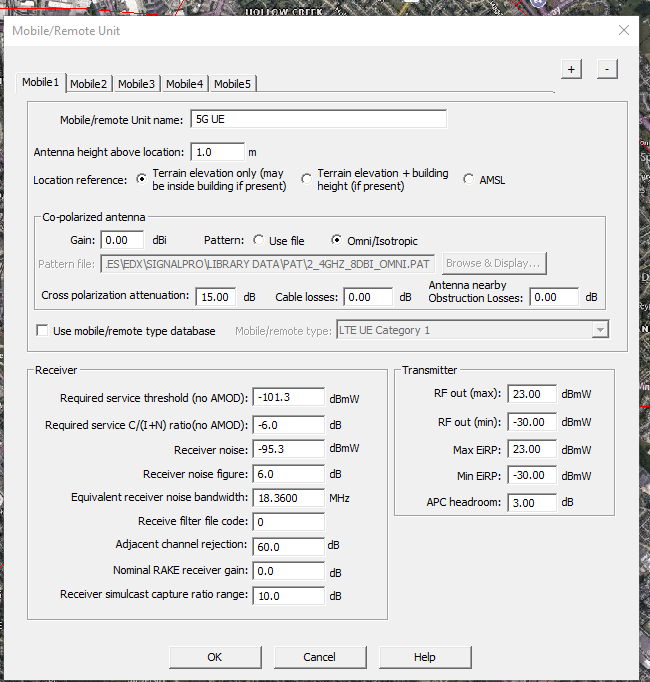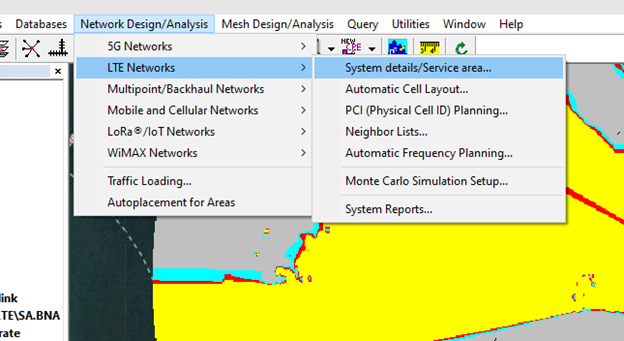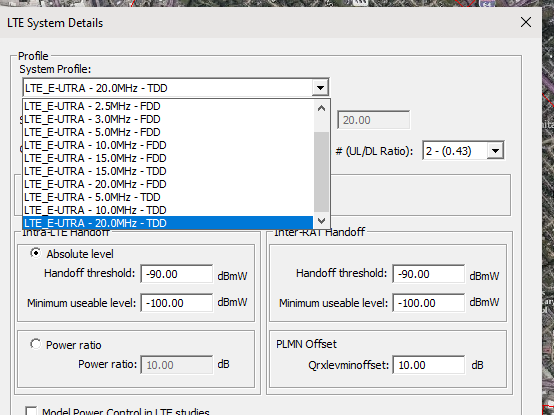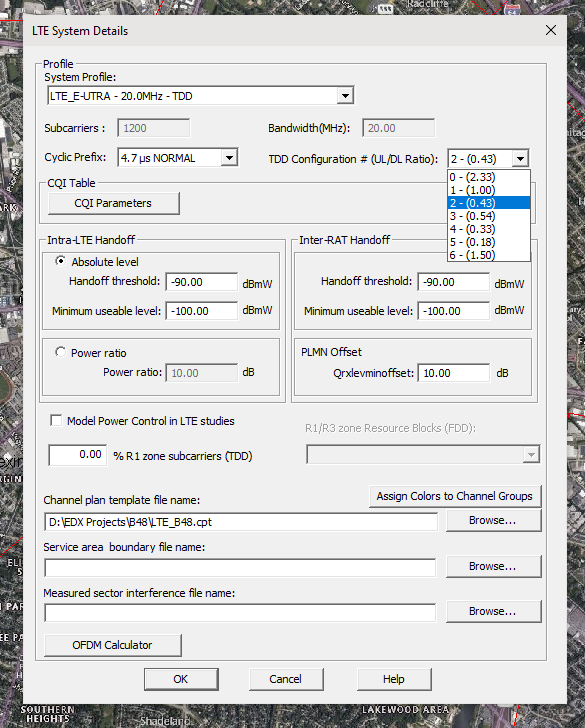n48 5G Signal Pro Settings
Follow the steps as specified in 5G Project Setup using the following project template:
| View file | ||
|---|---|---|
|
Ensure that the system profile, SCS, and bandwidth are correct.
Select the channel plan template file. An example is attached in the project template.
Select the TDD configuration.
The D’s are downlink slots/symbols, the U’s are uplink slots/symbols, the S’s are for the special slot typically where the transition from downlink to uplink occurs and are configured on a symbol basis. The G’s are guard period symbols. See vendor specs for more information.
Configure the cells as per other technologies in sectors dialog. Note the maximum EIRP for n48 sectors is 47 dBm per 10 MHz. So for 20 MHz the EIRP shall not exceed 50 dBm. See FCC part 96 for more information.
Configure the receiver. Note the UE power cannot exceed 23 dBm for mobile UE’s. See FCC part 96 for more information.
Note the noise bandwidth varies and is not exactly the channel size. See tables below for actual noise bandwidths.
FR1 Bandwidths
FR2 Bandwidths
All other standard Signal Pro settings should apply.
B48 LTE 4G Signal Pro settings
LTE settings are similar to 5G settings. The same FCC power limits apply for LTE as they do for 5G.
Base Station EIRP shall not exceed 47 dBm/10 MHz. So for 20 MHz LTE, the maximum EIRP is 50 dBm. See figure 1 above.
UE’s are limited to 23 dBm. This limit is not based upon power spectral density. See figure 2 above. The mobile receiver noise bandwidths are defined as:
The system profile is set in Network Design/Analysis->LTE Networks->System details/Service area:
Set you system profile using the follow pull down depending on the spectrum allocation. TDD profiles are recommended as CBRS spectrum is unpaired.
TDD Configuration 1 (DSUUDDSUUD) and configuration 2 (DSUDDDSUDD) are more commonly used depending upon traffic asymmetry.
An LTE Band 48 template can be downloaded and placed into into C:\ProgramData\EDX\Templates and unzip.
| View file | ||
|---|---|---|
|
